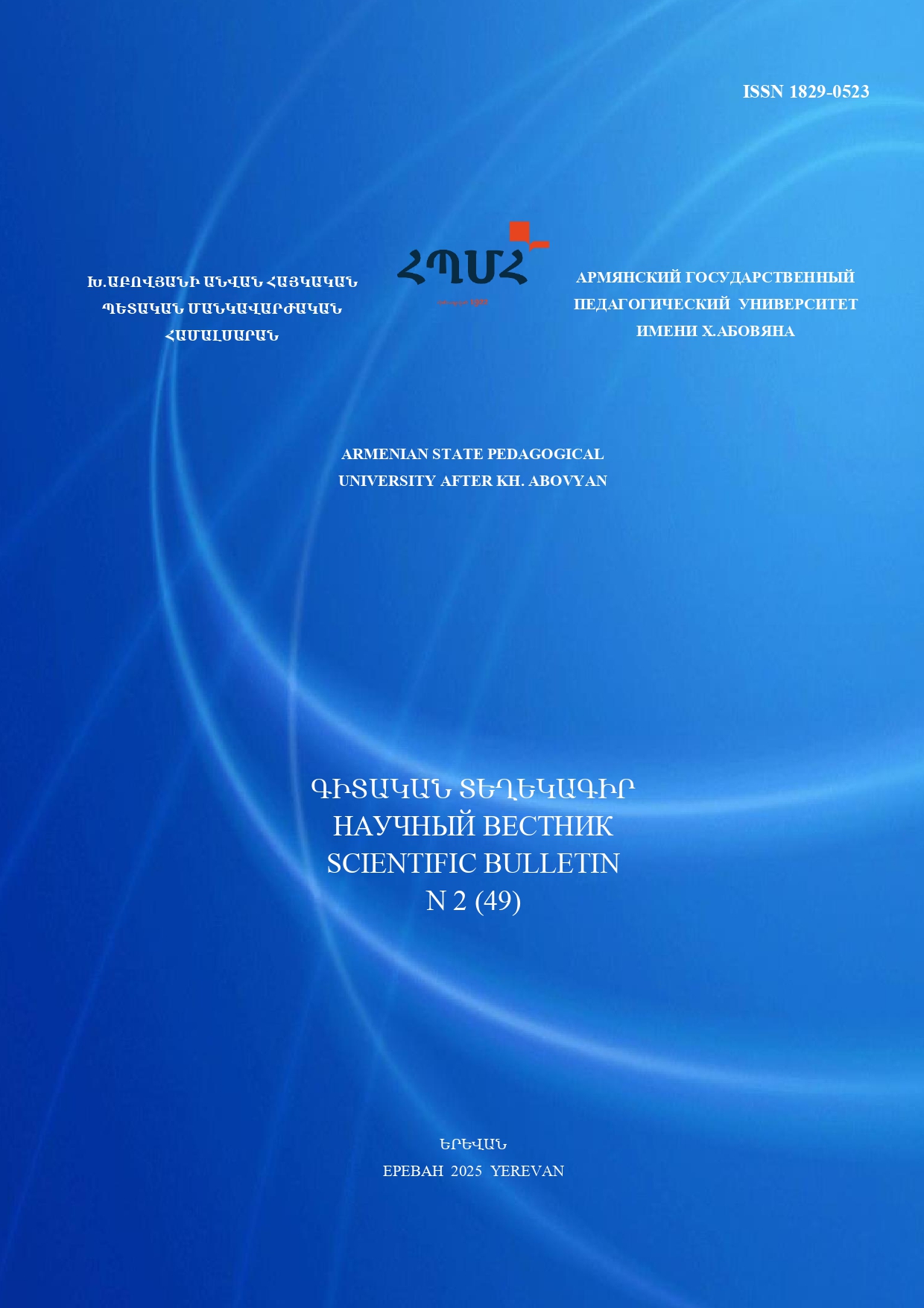THE "LEGO SERIOUS PLAY" METHOD IN UNIVERSITY TEACHING
DOI:
https://doi.org/10.24234/scientific.v2i49.218Keywords:
LEGO Serious Play, project-based learning, undergraduate and graduate education, interactive methods, research-based education, research-to-production thinkingAbstract
Contemporary higher education demands innovative teaching approaches that integrate scientific thinking, collaborative skills, and the development of creative solutions. The aim of this study is to develop and examine the LEGO Serious Play (LSP) method as an innovative approach in the teaching of university-level courses. Specifically, the application of this method was explored within the course "From Research to Production: Perspectives and Practice" offered in the Master's program in Applied Microbiology at Yerevan State University (YSU). The method was designed to foster systems and project-based thinking through play, with the goal of bridging the gap between scientific research outcomes and their application in industrial processes. As a result, students used LEGO sets to physically model their ideas, presented their projects through narrative storytelling, worked in a team-based environment, and participated in the co-creation of solutions. The outcomes of applying the method indicate an increase in student engagement, as well as enhancement of their creative and collaborative skills. The LSP method can serve as an effective tool to enhance learning processes and stimulate analytical and applied thinking in biomedical, natural sciences, and other educational programs.
References
Arif, F., Zubir, N., Mohamad, M., Yunus, M. (2019). Benefits and challenges of using game-based formative assessment among undergraduate students. Humanities & Social Sciences Reviews, 7, 203-213. https://doi.org/10.18510/hssr.2019.7426
Barkley, E. F., Cross, K. P., Major, C. H. (2014). Collaborative learning techniques: A handbook for college faculty. John Wiley & Sons.
Clarke, S., Peel, D. J., Arnab, S., Morini, L., Keegan, H., & Wood, O. (2017). EscapED: A framework for creating educational escape rooms and interactive games for higher/further education. International Journal of Serious Games, 4(3). https://dx.doi.org/10.17083/IJSG.V4I3.180
Collado-Valero, J. A., Rodríguez-Infante, G., Romero-González, M., Gamboa-Ternero, S., Navarro-Soria, I., Lavigne-Cerván, R. (2021). Flipped Classroom: Active Methodology for Sustainable Learning in Higher Education during Social Distancing Due to COVID-19. Retrieved from https://www.mdpi.com/2071- 1050/13/10/5336
Dann, S. (2018), “Facilitating co-creation experience in the classroom with Lego Serious Play”, Australasian Marketing Journal, 26 (2) 121–131. https://doi.org/10.1016/j.ausmj.2018.05.01
Freeman, S., Eddy, S. L., McDonough, M., Smith, M. K., Okoroafor, N., Jordt, H., Wenderoth, M. P. (2014). Active learning increases student performance in science, engineering, and mathematics. Proceedings of the National Academy of Sciences, 111(23), 8410-8415.
Gauntlett, D. (2018), Making is Connecting: The social power of creativity, from craft and knitting to digital everything, 2nd ed., Medford, MA: Polity Press.
Henriksen, D., Mishra, P., Fisser, P. (2016). Infusing Creativity and Technology in 21st Century Education: A Systemic View for Change. Educational Technology & Society, 19 (3), 27–37. file:///D:/Users/user/Downloads/Creativity-ETS2016.pdf
Jordão, T. C., Shahverdi, M., and Šauer, P. (2024). Innovative Teaching Methods and Approaches in Higher Education on Sustainable and Smart Cities Vol. 1 of Sourcebook Series Building Capacity in Higher Education for Climate Change and Smart cities. ISBN 978-82-8439-302-5. P. 164. DOI: https://doi.org/10.31265/USPS.291
James, A. (2015)․ Innovative pedagogies series: Innovating in the Creative Arts with LEGO®, York: Higher Education Academy [Online] Available from: https://www.heacademy.ac.uk/system/files/alison_james_final.pdf
Lengyel, P. S. (2020). Can the game-based learning come? Virtual classroom in higher education of 21st century. International Journal of Emerging Technologies in Learning, 15(2). https://dx.doi.org/10.3991/ijet.v15i02.11521
McGuinness, C., Fulton, C. (2019). Digital Literacy in Higher Education: A Case Study of Student Engagement with ETutorials Using Blended Learning. Journal of Information Technology Education: Research, 18(II), 1-28. http://www.jite.org/documents/Vol18/JITEv18IIPp001- 028McGuinness5256.pdf
Paudel, P. (2020). Online education: Benefits, challenges and strategies during and after COVID-19 in higher education. International Journal of Online and Biomedical Engineering, 16 (13). https://dx.doi.org/10.46328/ijonse.32
Wang, L., Li, Y., Li, H., Zhang, D. (2022). Effects of digital gamebased STEM education on students’ learning achievement: A meta-analysis. International Journal of STEM Education, 9(1). https://dx.doi.org/10.1186/s40594-022-00344-0
Wekerle, C., Daumiller, M., Kollar, I. (2020). Using digital technology to promote higher education learning: The importance of different learning activities and their relations to learning outcomes. https://opus.bibliothek.uniaugsburg.de/opus4/files/80072/80072%20Manuscript_Using_te chnology_to_promote_higher_education_learning_Wekerle_et_ al.pdf
Zenk, L., Hynek, N., Schreder, G., Zenk, A., Pausits, A. and Steiner, G. (2018). Designing Innovation Courses In Higher Education Using LEGO® SERIOUS PLAY®", International Journal of Management and Applied Research, 5 (4) 245-263. https://doi.org/10.18646/2056.54.18-019
Downloads
Published
Issue
Section
License
Copyright (c) 2025 ANNA POLADYAN

This work is licensed under a Creative Commons Attribution-NonCommercial 4.0 International License.




